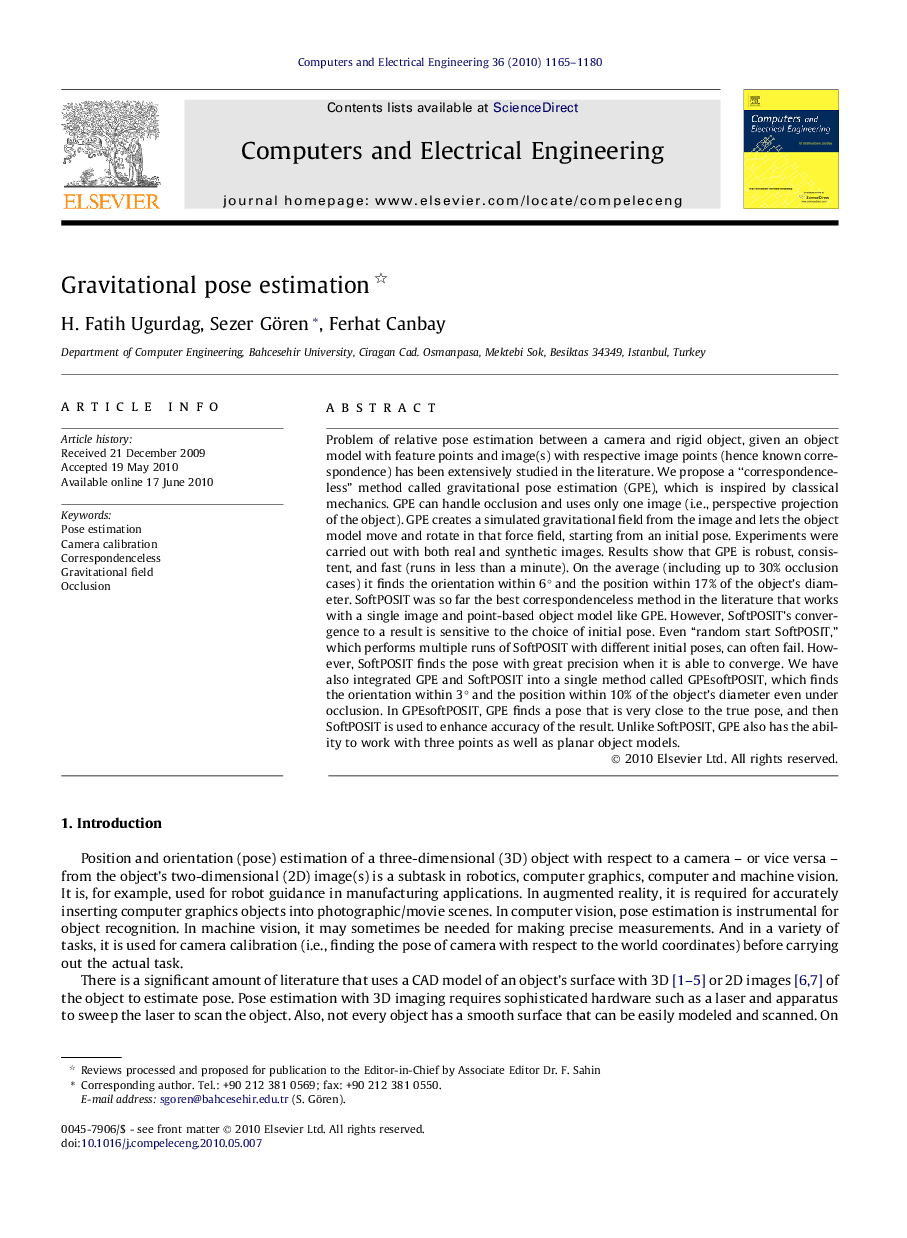| کد مقاله | کد نشریه | سال انتشار | مقاله انگلیسی | نسخه تمام متن |
|---|---|---|---|---|
| 455528 | 695385 | 2010 | 16 صفحه PDF | دانلود رایگان |

Problem of relative pose estimation between a camera and rigid object, given an object model with feature points and image(s) with respective image points (hence known correspondence) has been extensively studied in the literature. We propose a “correspondenceless” method called gravitational pose estimation (GPE), which is inspired by classical mechanics. GPE can handle occlusion and uses only one image (i.e., perspective projection of the object). GPE creates a simulated gravitational field from the image and lets the object model move and rotate in that force field, starting from an initial pose. Experiments were carried out with both real and synthetic images. Results show that GPE is robust, consistent, and fast (runs in less than a minute). On the average (including up to 30% occlusion cases) it finds the orientation within 6° and the position within 17% of the object’s diameter. SoftPOSIT was so far the best correspondenceless method in the literature that works with a single image and point-based object model like GPE. However, SoftPOSIT’s convergence to a result is sensitive to the choice of initial pose. Even “random start SoftPOSIT,” which performs multiple runs of SoftPOSIT with different initial poses, can often fail. However, SoftPOSIT finds the pose with great precision when it is able to converge. We have also integrated GPE and SoftPOSIT into a single method called GPEsoftPOSIT, which finds the orientation within 3° and the position within 10% of the object’s diameter even under occlusion. In GPEsoftPOSIT, GPE finds a pose that is very close to the true pose, and then SoftPOSIT is used to enhance accuracy of the result. Unlike SoftPOSIT, GPE also has the ability to work with three points as well as planar object models.
Journal: Computers & Electrical Engineering - Volume 36, Issue 6, November 2010, Pages 1165–1180